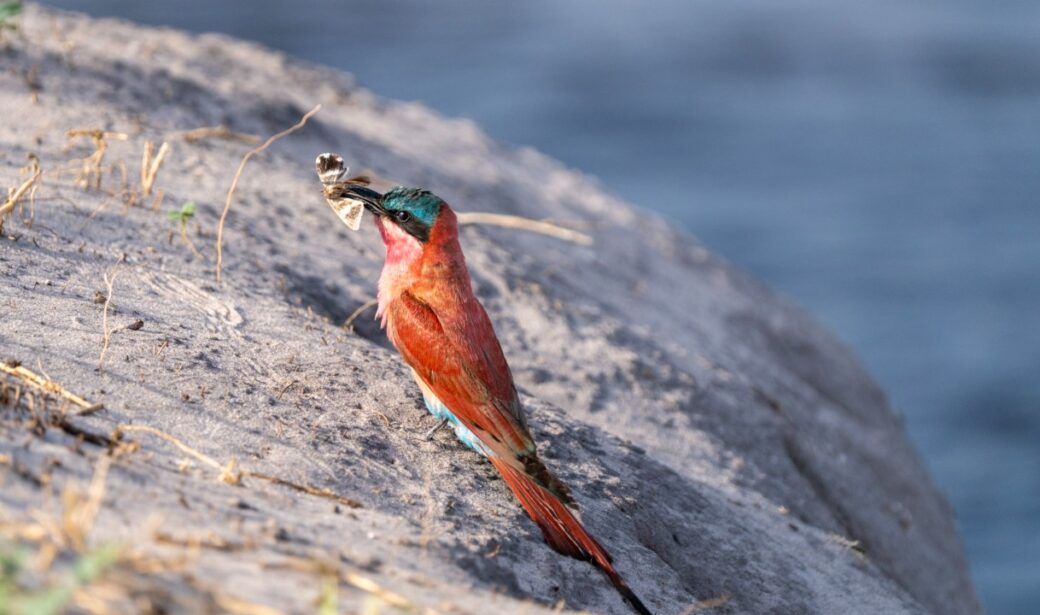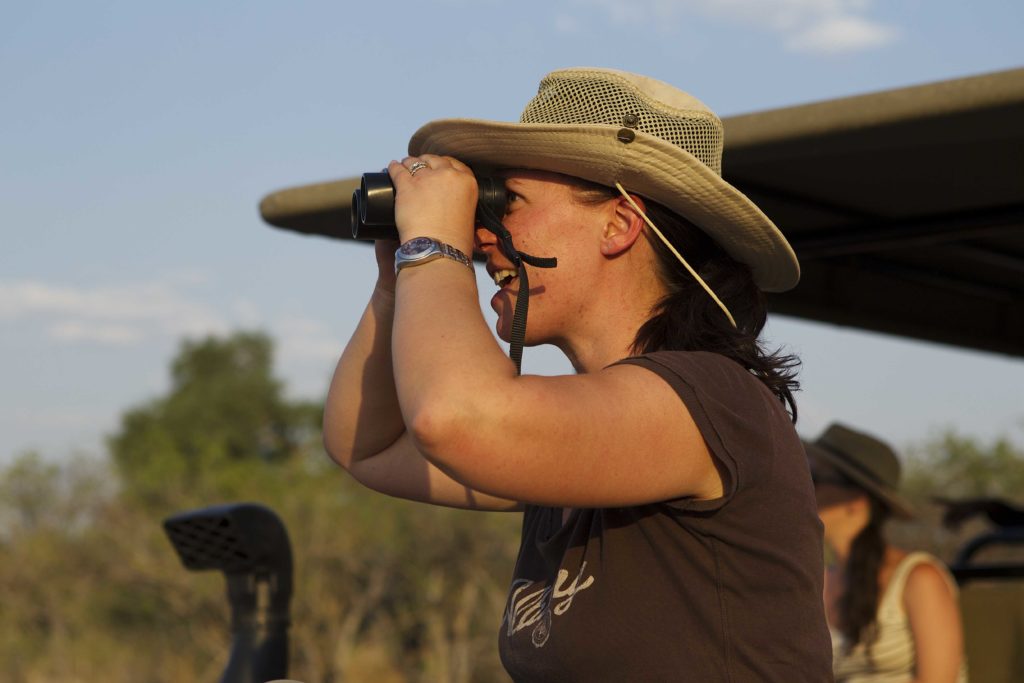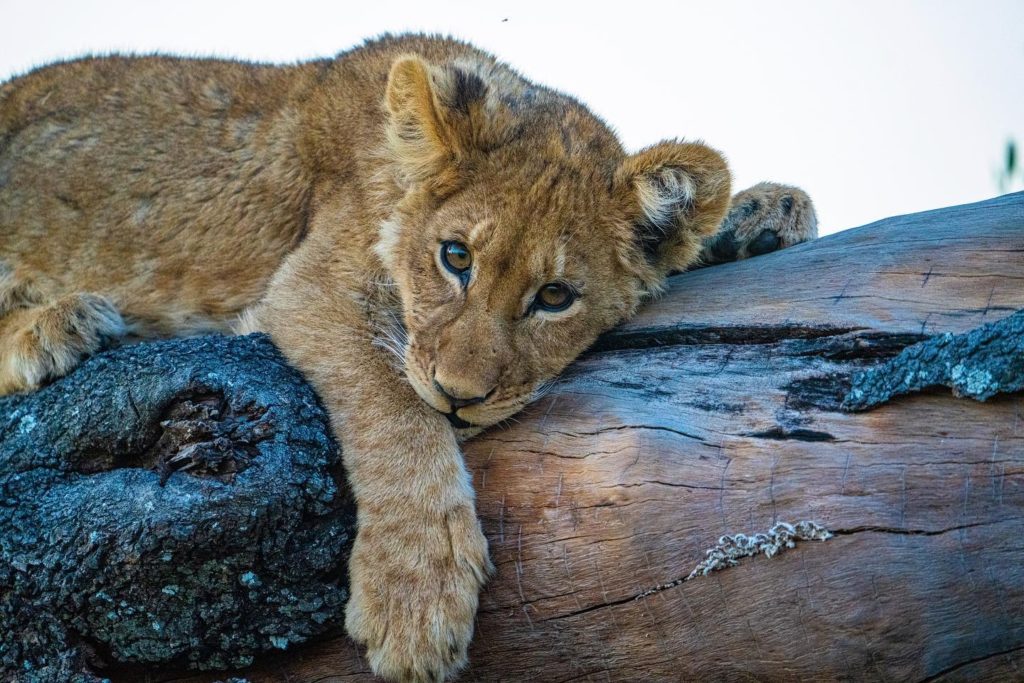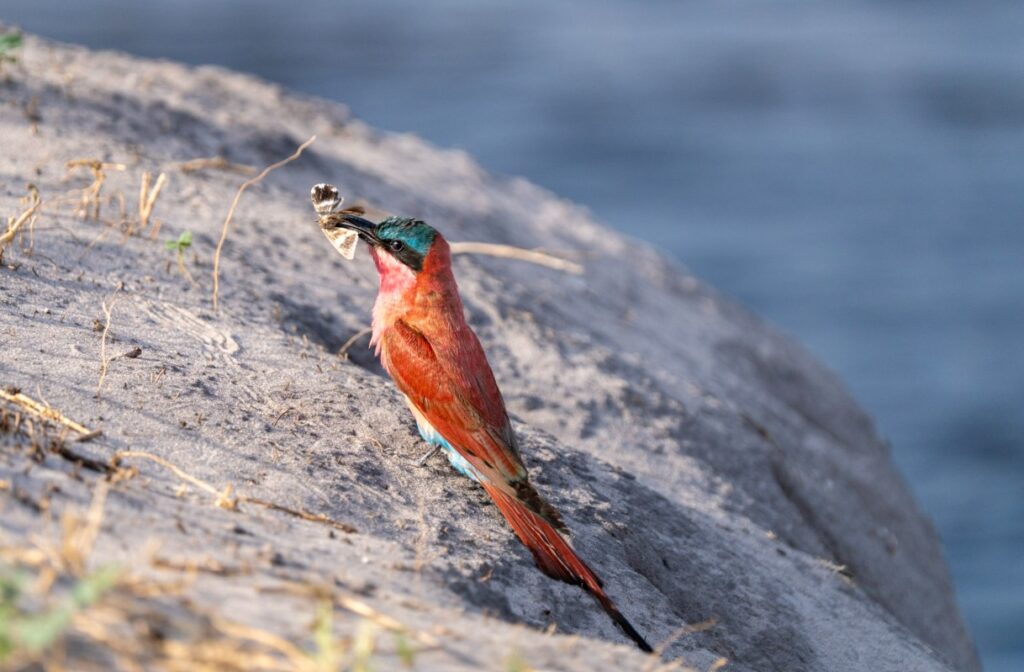Our colleague Nadine shares her thoughts on this topic:
There is no such thing as malaria in my native Germany, but yes—we still get those little irritating mosquitoes in the summer. So naturally, on my very first trip to Botswana, I wanted to be ultra-prepared. Top of the packing list? Mosquito repellent. Lots of it.
I had done zero research and figured the best place to stock up would be the pharmacy at OR Tambo International Airport in Johannesburg, en route to Maun. Surely they’d have the good stuff. Let’s just say… they were very happy to see me. I walked away with sprays for body, clothes, shoes, wristbands, you name it. And it cost a small fortune—so I thought, “This must be the Rolls Royce of anti-mozzie kits.”
Turns out, I wasn’t just repelling mosquitoes—I was repelling people, too. I was told they could smell me from ten metres away, and honestly, I didn’t blame them. I stank. And the kicker? It was early September, still dry season in Botswana, and—surprise!—there were hardly any mosquitoes around at all.

Malaria? Yes. But also… not really.
Here’s the thing many first-time travellers don’t realise: malaria does exist in parts of Botswana, but the risk is surprisingly low. Why? Two words: low population. Insects that transmit malaria—namely the Anopheles mosquito—thrive in densely populated areas where transmission cycles are easier to sustain. But Botswana’s vast open landscapes, scattered settlements, and pristine wilderness mean those cycles are often interrupted.
During the dry season (May through October), mosquitoes are virtually non-existent in many areas. Even in the wetter months, most safari camps are well-prepared, with mosquito nets, fans, and repellents on hand. Many travellers—even repeat safari-goers—choose not to take prophylaxis, especially when visiting the drier central and southern regions.
That said, it’s always best to chat with your doctor and base your decision on your itinerary and medical history.
The Wisdom of the Wild
And then there’s the local knowledge. One of my favourite discoveries was learning about the sage bush, used for centuries by the San people of the Kalahari. This aromatic shrub is a natural insect repellent. On a bush walk, I watched a San tracker crush a few leaves between his palms and rub it on his skin. It smelled earthy, calming—nothing like the chemical clouds I’d wrapped myself in at OR Tambo. This ancient plant isn’t sold in pharmacies. But it’s one of many examples of how the wild offers its own solutions—quiet, effective, and sustainable.
What I Recommend Today
Fast forward many safaris later—I’ve travelled in every month of the year and can say this with confidence: when it comes to insects, Botswana is no worse than Europe. If you’re heading out on safari, you don’t need to empty your wallet in a pharmacy. Every lodge and camp I’ve ever visited stocks “Peaceful Sleep”, a South African-made repellent that comes as a spray, stick, or lotion. It works, it’s gentle, and best of all—it doesn’t clear a 10-metre radius around you. Highly recommend.
And yes, in true safari tradition, a Gin & Tonic helps too—thanks to the quinine in the tonic water. (Let’s be honest, even if it didn’t help, we’d still drink it.) One of the best gins in the world is actually from Botswana our very own “Okavango Gin”. When travelling in Botswana you need to taste it, it is delicious.
Final Thoughts: Don’t Panic. Prepare Lightly.
Botswana is a place of quiet wilderness, epic skies, and small wonders—mosquitoes aren’t usually one of them. Pack a repellent, wear long sleeves in the evenings, and bring your sense of humour. Leave the full-on chemical warfare kit at home.
________________________________________________________________________________________________________________________
Für unsere deutschen Freunde, hier unsere Übersetzung:
Malaria in Botswana: Mythen, Mücken und ein guter Schluck Gin
In meiner Heimat Deutschland gibt es keine Malaria – aber ja, diese kleinen, nervigen Sommermücken kennen wir trotzdem nur zu gut. Als ich also zum ersten Mal nach Botswana reiste, wollte ich bestens vorbereitet sein. Ganz oben auf der Packliste? Mückenschutz. Und zwar reichlich davon.
Ich hatte keine Sekunde recherchiert und dachte mir: Die Apotheke am Flughafen OR Tambo in Johannesburg – auf dem Weg nach Maun – ist sicher der beste Ort, um mich einzudecken. Tja… die Verkäufer waren auf jeden Fall begeistert von mir. Ich kaufte alles, was ging: Sprays für Körper, Kleidung, Schuhe, Armbänder – das volle Programm. Hat ein kleines Vermögen gekostet, aber ich dachte: „So teuer? Muss ja wirken – das ist sicher die Luxusklasse unter den Mückenmitteln!“
Tja, was soll ich sagen… ich habe nicht nur Mücken vertrieben, sondern auch Menschen. Man sagte mir, man könne mich schon aus zehn Metern Entfernung riechen – und ganz ehrlich, ich konnte es verstehen. Ich stank. Und das Beste daran? Es war Anfang September – noch Trockenzeit in Botswana – und Überraschung: Es gab kaum Mücken.
Malaria? Ja. Aber auch… eher nicht.
Viele Erstbesucher sorgen sich wegen Malaria – ja bitte immer Vorsicht walten lassen: Ja, es gibt Malaria in Teilen Botswanas – aber das Risiko ist überraschend gering. Warum? Zwei Worte: geringe Bevölkerungsdichte. Je höher die Bevölkerung, desto grösser das Risiko. In abgelegenen Gegenden im Busch ist das Risiko geringer.
Malaria wird durch die Anopheles-Mücke übertragen. Die fühlt sich besonders in dicht besiedelten Gebieten wohl, wo der Infektionskreislauf leicht aufrechterhalten werden kann. In Botswana hingegen: weite Landschaften, verstreute Siedlungen und viel unberührte Wildnis – das stört diesen Kreislauf massiv.
Während der Trockenzeit (Mai bis Oktober) gibt es in vielen Regionen quasi keine Mücken. Und selbst in der Regenzeit sind die Safari-Camps gut ausgestattet: Moskitonetze, Ventilatoren und lokale Repellents gehören zur Standardausrüstung. Viele Reisende – auch erfahrene Safari-Veteranen – entscheiden sich sogar ganz bewusst gegen Malaria-Prophylaxe, insbesondere wenn sie nur in den trockeneren, zentralen oder südlichen Teilen des Landes unterwegs sind.
Natürlich gilt wie immer: Bitte sprich mit deinem Arzt und entscheide individuell – je nach Route und Gesundheitslage.
Die Weisheit der Wildnis
Und dann gibt es da noch das lokale Wissen – das mich bis heute begeistert. Eines meiner liebsten „Aha“-Erlebnisse war der Salbeibusch, den die San seit Jahrhunderten in der Kalahari als natürliches Mückenschutzmittel nutzen. Bei einem Bushwalk sah ich, wie ein San-Tracker ein paar Blätter zwischen den Handflächen zerrieb und sich den duftenden Pflanzensaft auf die Haut rieb.
Der Geruch? Erdig, beruhigend – und um Welten angenehmer als die Chemie-Bombe, die ich mir damals am Flughafen aufgetragen hatte.
Diese uralte Pflanze gibt es nicht in Apotheken. Aber sie ist ein schönes Beispiel dafür, dass die Natur oft ihre ganz eigenen – stillen, wirksamen und nachhaltigen – Lösungen parat hat.
By Nadine Pittorino – nadine@safarispecialists.net





